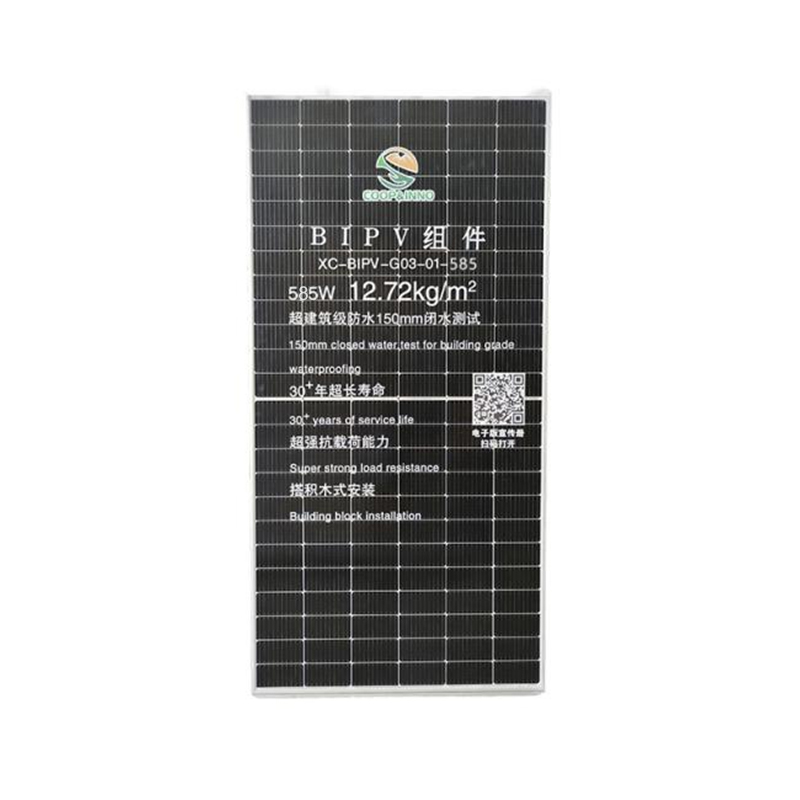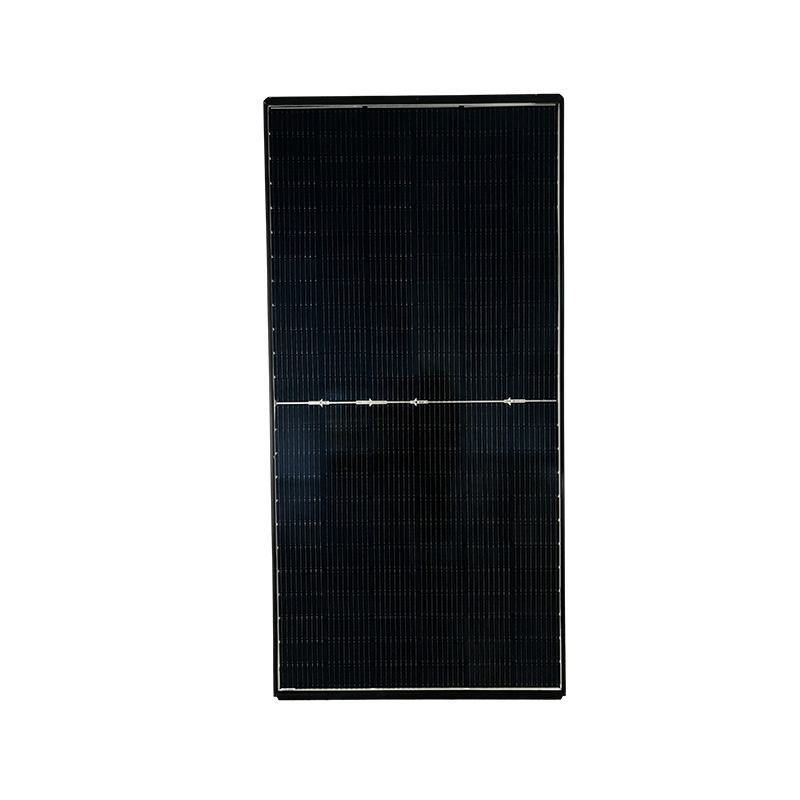
Are crystalline silicon BIPV systems the key to zero-energy buildings?
Publish Time: 2025-08-12
Crystalline silicon BIPV systems are a key component of zero-energy buildings, but they are not the only key. Their high efficiency and cost-effectiveness make them indispensable, but achieving true zero-energy requires integration with other renewable energy technologies, energy storage, and smart design.1. Crystalline silicon BIPV: A key advantage in achieving zero-energy goalsHigh efficiency: Crystalline silicon (c-Si) BIPV systems have conversion efficiencies of 19-21% (monocrystalline) and 16-18% (polycrystalline), significantly higher than thin-film PV alternatives. This enables them to generate more electricity per unit area, which is crucial in dense urban environments where rooftop/façade space is limited.Cost-effectiveness: Despite a higher upfront cost, c-Si BIPV has a longer lifespan (over 25 years) and lower degradation (0.5-0.7% per year), resulting in a lower long-term levelized cost of electricity (LCOE) than thin-film or traditional solar panels.Scalability: The wide production range of crystalline silicon modules ensures supply chain stability and economies of scale. This makes them suitable for large-scale zero-energy building projects, such as the Shekou Tower in Shenzhen, China (BIPV generates 314,800 kWh annually) and the Guangdong-Hong Kong-Macao Big Data Center in Guangzhou, China (3,200 square meters of photovoltaic glass, reducing carbon emissions by 268 tons annually).2. Limitations of Crystalline Silicon BIPV in Zero-Energy BuildingsAesthetic and Design Limitations: The rigidity and opacity of crystalline silicon modules restrict their application in curved or translucent architectural elements. Thin-film building-integrated photovoltaics (BIPV) (e.g., CIGS, CdTe) offer greater flexibility and customization, as exemplified by the CdTe Thin-Film Village in Ningbo, where the roof doubles as a generator while retaining its traditional aesthetic.Low-Light Performance: While c-Si's efficiency decreases under cloudy or diffuse light conditions, thin-film technologies like CdTe can maintain 80-90% of peak output in low-light environments, improving energy efficiency year-round.Heat dissipation challenges: High operating temperatures (a common characteristic of c-Si) reduce efficiency and accelerate performance degradation. Solutions such as photovoltaic-thermal (PVT) systems with integrated cooling channels are needed to optimize performance.3. Complementary Technologies for True Zero-Energy BuildingsTo address the limitations of c-Si BIPV, zero-energy buildings must employ a variety of technological solutions:Energy Storage: Lithium-ion batteries or flow batteries can store excess daytime electricity for use at night, addressing intermittency. For example, a hybrid photovoltaic-building-integrated energy storage system in a zero-energy residence in Beijing, China, achieved 98% self-sufficiency by combining crystalline silicon panels with a Tesla Powerwall.Thin-film photovoltaic building-integrated systems for facades: Thin-film modules on vertical surfaces capture diffuse light, while crystalline silicon modules covering the roof absorb direct sunlight. The Singapore Solar Innovation Park uses this strategy, where the hybrid photovoltaic building-integrated system has increased annual energy production by 15-20%.Smart Grid and Demand Response: Dynamic load management ensures that excess BIPV energy is sold to the grid during peak demand periods, while electricity is purchased during off-peak hours. A virtual power plant (VPP) in Shenzhen, China, clusters buildings equipped with BIPV systems to stabilize the grid and reduce reliance on fossil fuels.4. Case Study: Crystalline Silicon Building-Integrated Photovoltaics (BIPV) ApplicationShekou Tower, Shenzhen, China: After retrofitting with BIPV, the tower generates 314,800 kWh of electricity annually, meeting 47% of its energy needs and reducing carbon emissions by 245 tons per year. Combined with geothermal heating and LED lighting, the tower achieves an overall energy saving of 75%.Guangzhou Guangdong-Hong Kong-Macao Big Data Center, China: 3,200 square meters of BIPV glass on the exterior walls provides 10% of the building's electricity, while membrane skylights on the roof contribute an additional 5%. BIPV combined with AI-driven energy management can reduce operating costs by 30%.5. A Synergistic FutureCrystalline silicon building-integrated photovoltaic (BIPV) systems are indispensable for zero-energy buildings due to their high efficiency and cost-effectiveness. However, due to their rigid design, low-light performance, and thermal sensitivity, they require integration with thin-film building-integrated photovoltaic (BIPV), energy storage, and smart grids. Experience in cities like Shenzhen and Guangzhou demonstrates that a hybrid approach—using crystalline silicon for rooftops, thin-film for facades, and energy storage for increased flexibility—is the most viable path to achieving true zero-energy goals.While crystalline silicon building-integrated photovoltaic (BIPV) systems are the cornerstone of zero-energy buildings, their full potential can only be realized when combined with complementary technologies. The future lies in optimized hybrid systems that combine the efficiency and cost advantages of crystalline silicon with the versatility and reliability of thin-film energy storage.


